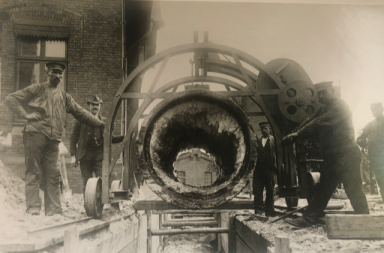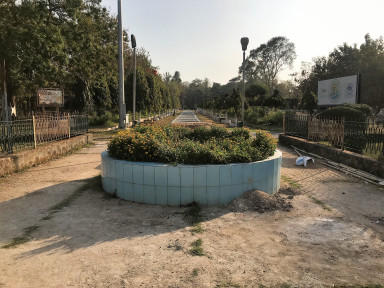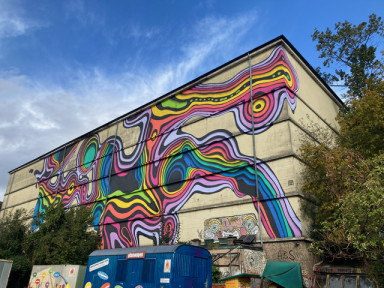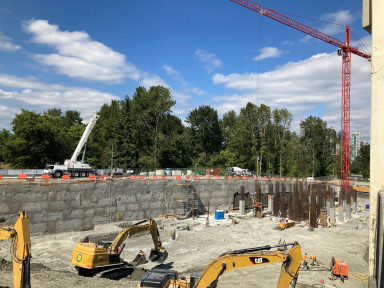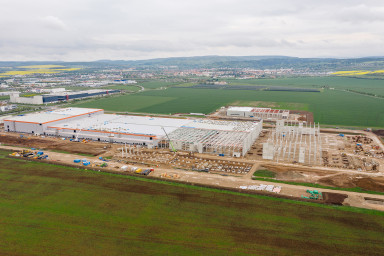Fixing change?
An examination of maintenance and repair practices in the context of Hamburg’s piped infrastructure
This project investigates different dimensions of past and present maintenance and repair practices of Hamburg’s networked infrastructures. Although maintenance and repair are crucial for the functioning of our society, they often only become visible in moments of breakdown and failure. The aim of the project is to understand the ambiguity of these practices as a sustaining as well as a transforming force. Drawing on concepts from urban geography, ethnography, and science and technology studies (STS) and using a mix of historical-analytical and qualitative methods, this research addresses modes of ‘urban future-making’ that are often understudied and undervalued within prevailing narratives of innovation.
- infrastructures as socio-technical systems
- maintenance and repair
- labour
Context
While technical innovation is often discussed as a solution to current and future crises facing the city, infrastructures resist rapid radical change through their materiality and embeddedness as socio-technical systems. This research therefore aims to shift the focus of the debate on urban futures from narratives of innovation and planning to the often invisible labour of maintenance and repair. Becoming most evident in moments of failure and dysfunction, these practices have a dual quality: On the one hand, they counteract the constant decay of infrastructures and thereby enable the basic functioning of our society. On the other hand, as various authors in the social sciences and humanities have pointed out, these practices themselves have an inherent potential for transformation.1
Aims
The aim of this project is to empirically evaluate this ambiguity between the sustaining and at the same time potentially transforming capacity that the literature assigns to maintenance and repair, using the example of Hamburg’s gas and water infrastructures. Therefore, the overarching question is how the maintenance and repair of these infrastructures are related to wider transformation processes. In order to answer this question, this work examines different dimensions of past and present maintenance and repair practices. Situated within a social science perspective, the analysis addresses the physical acts of fixing and maintaining but also evaluates the institutional, political, and financial as well as technical, material, and symbolic aspects of these activities at different moments in time. The considered time frame reaches from the establishment of the modern infrastructural ideal2 in the second half of the 19th century to the present day. This project contributes empirically and theoretically to the conceptualization of the ambiguity of repair and maintenance, as well as to discussions on hybrid and historically evolving infrastructures.3 With its cross-sectoral perspective, this thesis also aims at filling a research gap regarding the joint analysis of different types of networked infrastructures.4 Apart from their academic contribution, these insights can be of practical relevance for the planning and management of infrastructures.
Research design
Methodologically, this research draws upon concepts from theories of social practice. As this approach does not place the actions of individuals or an overarching structure at the centre of analysis and includes non-human actors, it is particularly well suited for the study of socio-technical systems. To examine different levels and dimensions of past and present practices as well as infrastructural change, the research design includes a mix of historical-analytical and qualitative methods: Extensive archival work and document analysis (e.g. norms, regulations, legislation) will be supplemented by interviews with relevant actors (e.g. engineering, planning, and academic experts, political and administrative personnel, maintenance workers), by participant observation of maintenance and repair work on different levels and contexts, and by walk-alongs. Although maintenance and repair happen continuously, this project uses key events (e.g. disruption, introduction of new technologies, organizational change) in Hamburg’s infrastructural history as analytical moments to enter the archival research.
The case of Hamburg’s infrastructures offers a rich object of research because of the city’s pioneering role in the establishment of networked infrastructures on the European continent (the first centralized water infrastructure outside of England was built here). While most of these networks physically operate in the same way now as when they were built – sometimes even using the same pipes – different social, political, and economic phases account for changes in organization, ownership, and use of technical infrastructures. The impression of physical obduracy is contrasted by material and organizational bundling and unbundling processes. In addition, Hamburg’s new large-scale inner-city developments, where extensive infrastructure systems are being built from scratch, establish an important contemporary reference.
Supervisors:
